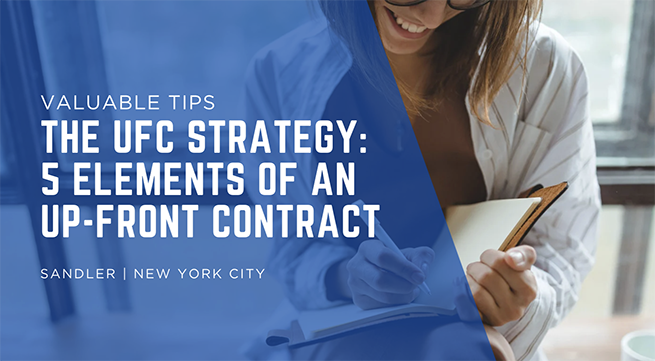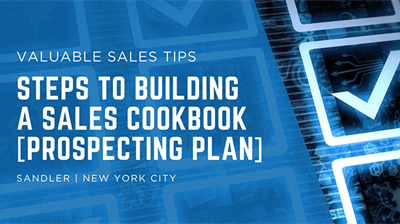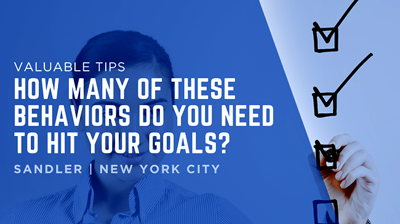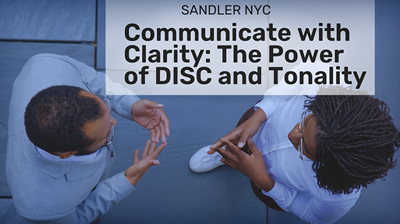Do your conversations or sales calls sometimes end without a clear understanding of what happens next?
If so, you're not alone. Many sales professionals struggle with the lack of structure in their calls, which leads to confusion, wasted time, and missed opportunities. The solution? Implementing an 'Up-Front Contract (UFC.)
What Is an Up-Front Contract?
An 'Up-Front Contract' is a verbal agreement that sets the tone for a conversation by clearly defining expectations, agendas, and outcomes. It removes the guesswork from a sales call, ensuring both you and your prospect are aligned from the start.
This strategy isn’t just for sales. It’s a powerful communication tool you can use in conversations with your boss, colleagues, clients, and even family members. While the structure may vary depending on the situation, the core principles remain the same:
- Clarify the purpose of the conversation
- Set expectations for both parties
- Define acceptable outcomes
An Example of Setting Up an Up-Front Contract
Here’s a simple way to introduce an Up-Front Contract at the beginning of a meeting:
'I want to make sure we’re on the same page during our conversation today. Can you tell me how much time you’ve set aside for this meeting? Also, what do you see as the main purpose of our discussion?'
By opening with these questions, you immediately establish a shared agenda and ensure the conversation is productive.
The Key Components of an Effective Up-Front Contract
To structure an effective UFC, consider these key elements:
1. Client’s Agenda
You need to understand what’s important to your prospect. Ask:
*"When we scheduled this meeting, we agreed to discuss your current challenges to see if we can offer a solution. Outside of this, what are you hoping to accomplish in today’s discussion?"*
This ensures that the conversation stays relevant to their needs.
2. Your Agenda
As the salesperson, you also have specific goals. Set the stage by saying:
"To make sure I fully understand your situation and desired outcomes, I’ll need to ask you some questions. If I think we’re a good fit, we’ll also discuss budget and implementation. Would that be okay with you?"
This gets buy-in from the prospect and sets the expectation that you’ll be asking direct and important questions.
3. Defining the Outcome
One of the most important elements of a UFC is establishing acceptable next steps. There are 'only three possible outcomes' of a productive sales call:
1. 'Yes' – The prospect is ready to move forward.
2. 'No' – They decide it’s not the right fit (which is perfectly acceptable).
3. 'A Scheduled Next Step' – A defined, agreed-upon next meeting with a clear purpose.
By outlining these outcomes, you prevent ambiguity and avoid situations where the prospect strings you along without a real decision.
Why Up-Front Contracts Work
A well-structured Up-Front Contract removes surprises, speeds up the sales process, and makes the experience smoother for both you and your prospect. Instead of wasting time on vague discussions, you both participate in a clear, qualified decision-making process.
Implementing the UFC: Step-by-Step
To effectively use an Up-Front Contract, follow these steps:
1. Confirmation– Ensure the prospect has time to talk and is open to a discussion. Example: *"Is this still a good time to connect?"*
2. Acknowledgment – Show respect for their role and responsibilities. This builds rapport and trust.
3. Questioning – Gain a deeper understanding of their needs, challenges, and priorities.
4. Clarifying Expectations – Align on both parties' goals for the conversation.
5. Outcome Agreement – Establish that the conversation will end with a clear decision or next step.
Start Using Up-Front Contracts Today
If you want to eliminate confusion, reduce sales call friction, and build trust with prospects, start using the Up-Front Contract in your conversations. It will set you apart from competitors who are simply pushing their products instead of focusing on 'real solutions' for their clients.
Let’s talk about how Sandler, NYC proven sales and leadership development programs can help you and your team reach your next level of success.






